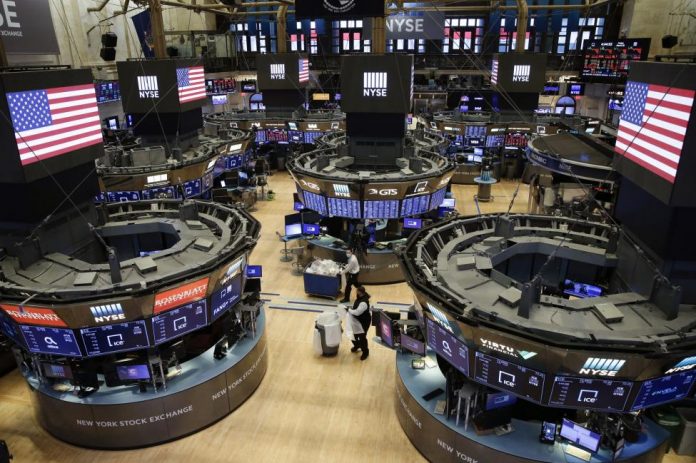
March 23 (UPI) — For the first time in history on Wall Street, there won’t be any waving or shouting or bustling among traders on the floor of the New York Stock Exchange at the opening bell Monday.
Instead, things will be mostly quiet as stockbrokers begin their first day of electronic trading.
As a result of the global coronavirus outbreak, the exchange decided to end physical trading on the floor — an activity that usually involves large gatherings there. Traders and managers will begin working remotely until further notice.
The closure affects two main areas in New York City and one in Northern California — the equities trading floor and American Options trading floor in Manhattan, and the Arca Options trading floor in San Francisco.
Monday’s move to telecommuting is the first time the stock exchange will close the trading floor since it began operating at its current location in 1903. The floor has closed before, during times of war and severe weather, but the stock markets themselves were also closed for business on those occasions.
NYSE President Stacey Cunningham made the decision last week to close the trading floor after two workers tested positive for the coronavirus disease.
“NYSE trading floors provide unique value to issuers and investors, but our markets are fully capable of operating in an all-electronic fashion,” she said. “And we will proceed in that manner until we can re-open our trading floors to our members.
“While we are taking [this] precautionary step … we continue to firmly believe the markets should remain open and accessible to investors. All NYSE markets will continue to operate under normal trading hours despite the closure of the trading floors.”
The three major U.S. indices that trade at the NYSE have seen wild, virus-related volatility in recent weeks. The Dow Jones Industrial average, which has been on a steady upswing for years, has erased all of the gains it’s made since President Donald Trump took office — one of the primary pillars of his re-election campaign.
The Securities and Exchange Commission published rules over the weekend to allow the NYSE to move to electronic trading.
“The nation’s capital markets have functioned well as market participants have implemented their business continuity plans,” it said. “NYSE will move to fully electronic trading on Monday. Normal market hours will apply.”
The emergency circuit breakers that cut power to trading infrastructure, installed after the “Black Monday” crash in 1987 to halt trading if losses become too steep, will continue to operate normally, officials said.
NYSE Group Chief Operating Officer Michael Blaugrund said the market’s resilience has been impressive but operating remotely has been frustrating.
“To be in market conditions that are this extraordinary and dealing with strategic questions that are this significant and having to do it from a distance is maddening,” he said.
Analyst Tim Anderson of Equity Market Strategist at TJM Investments said he expects the switch will “kill the business” of some floor brokers.
“Many portfolio managers use price and volume information they get directly from the trading floor to help ‘right size’ buy and sell orders,” he said.
The SEC’s rule changes are temporary. They will last until May 15 — unless the floor can reopen sooner.
Amid the wild trading days on Wall Street recently, there have been some calls to close the markets. Cunningham and leaders of the Nasdaq and global markets firm CME have opposed the idea.
The move to remote trading is not related to an order Friday by New York Gov. Andrew Cuomo for all nonessential workers to remain home as a measure to prevent the spread of the coronavirus disease, as financial services workers are formally considered “essential” by the state of New York. Nonetheless, the reason for Cunningham’s and Cuomo’s decisions is the same.
“The NYSE has robust, regularly tested contingency plans in place to initiate fully electronic trading on its exchanges,” the NYSE said in a statement. “However, floor broker order types will be unavailable. On the NYSE’s options markets, electronic trading will continue normally but open-outcry trading will be suspended with the closure of the options trading floors.
“The decision to temporarily close the trading floors represents a precautionary step to protect the health and well-being of employees and the floor community in response to COVID-19.”






